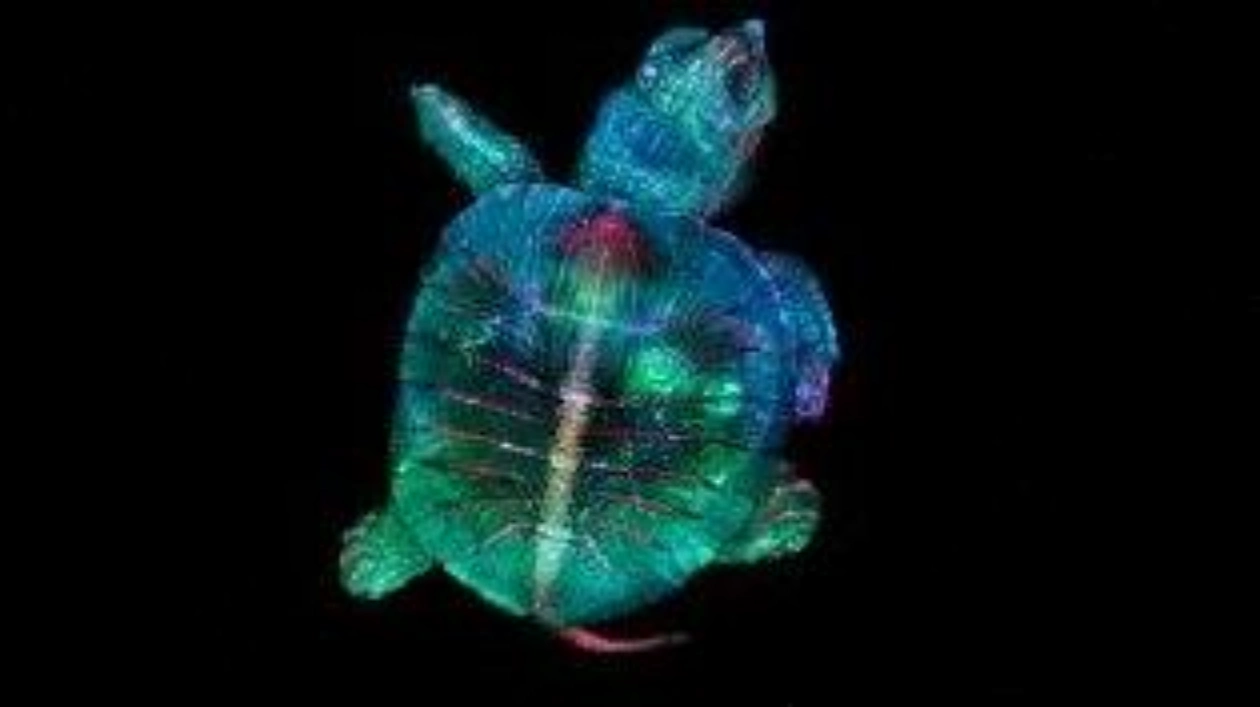With the click of a camera and the aid of a microscope, the minuscule transforms into the magnificent. Click on the images below to enlarge.
A detailed view of mouse brain tumor cells claimed the top spot in the 2024 Nikon Small World photomicrography competition. Neuroscientist Bruno Cisterna captured the image using advanced microscopy techniques as part of his research into neurodegenerative diseases like Alzheimer’s and ALS. The magenta spheres represent the nuclei of each tumor cell, encircled by actin proteins (white) that shape the cells. Green structures are microtubules, which link some cells and transport organelles like mitochondria, crucial for cellular energy production.
Earlier this year, Cisterna and his team published a study featuring similar images, revealing that a protein named profilin 1 (PFN1) aids microtubule function. Insufficient PFN1, they reported in the July Journal of Cell Biology, leads to faster mitochondrial transport within cells, causing cell death. Cisterna, from Augusta University in Georgia, emphasizes the “delicate balance” between mitochondrial movement and transport, suggesting that tracking cellular structures through images like his winning photo can uncover abnormalities linked to cell death and neurodegeneration.
The tumor cells were among 88 photos honored on October 17 in the 50th annual contest. Here are a few other captivating microscopic images.
Physicist Marcel Clemens of Verona, Italy, connected an entomology pin to a dismantled stick gas lighter using a wire. By triggering the lighter and using long exposure times, he captured electrical arcs traveling along the wire. The pink or purple glow originates from electrically charged atoms (ions) exchanging electrons, though Clemens is unsure about the blue emissions around the lighter and the orange trails from the pin, possibly from super-hot metal particles.
Photographer Paweł Błachowicz combined multiple photos to create an “unearthly” close-up of a small crab spider’s eyes. The spider’s head, roughly 1 millimeter in size, might resemble a UFO or a mutant Kermit the Frog to some viewers.
Life scientist Kseniia Bondarenko used a high-resolution microscope and computational methods to capture Toxoplasma gondii parasites dividing inside a human skin cell. The parasites’ inner shells are magenta, outer skeletons yellow, and nuclei blue. Most infected individuals show no symptoms, but severe cases can damage the brain and other organs.
Zoologist Sherif Abdallah of Tanta University in Egypt highlights the beauty in destruction, focusing on the red palm weevil, a devastating pest for palm trees. Abdallah’s controlled lighting and image stitching reveal intricate details of the weevil’s head, emphasizing its destructive capabilities.
German photographer Daniel Knop’s series on a swamp rose mallow (Hibiscus moscheutos) captures the unfolding of a millimeter-sized anther over 40 to 50 minutes. The process, documented through hundreds of photos, showcases the development of living things and encourages curiosity about nature.






